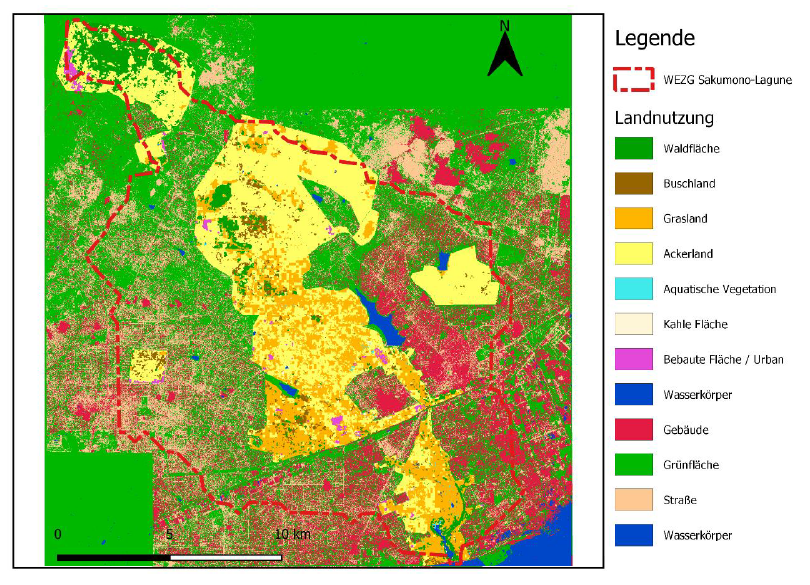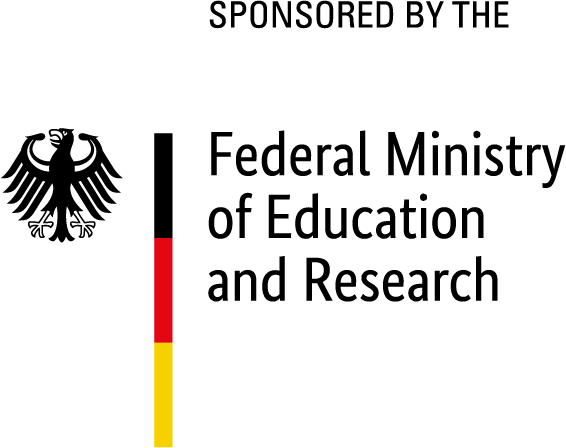Final Theses on Water Balance Models and Rainwater Management Plans in Ghana
Since the start of the BMBF-funded joint project RAIN, three students have already completed their final thesis within this project. The content of the theses dealt with the development of water balance models for rural and urban regions in Ghana, as well as a methodological evaluation of Ghana’s national and local water management plans. Due to the project-related questions, the results of the work were profitably integrated into the current and upcoming project work.
Annalene Wedding’s bachelor thesis dealt with the development of a water balance model for urban and rural water catchment areas in Ghana. In cooperation with the ISA (RWTH Aachen), supervised by Univ.-Prof. Dr.-Ing. Pinnekamp and Dr.-Ing. Haußmann, Annalene Wedding investigated a selection of modelling programs with regard to their applicability for a continuous water balance model in Ghana. Subsequently, a water balance model for the metropolitan region of Accra was created with the help of HEC-HMS. This was done conceptually on the basis of assumptions, since at this time the data collection phase as well as the concrete selection of the pilot regions of the project had not yet been completed. The created reference model served as a basis for a sensitivity analysis of the parameters, which was used to investigate the extent to which HEC-HMS is suitable for differentiating the water balance in urban and rural regions.
Building on Annalene Wedding’s final thesis, Simon Ludwig examined the chances and limits of model adaptation, using the example of a water balance model in Accra. This was done in cooperation with the FH Aachen, Department of Civil Engineering, and Prof. Dr.-Ing Höttges. On the basis of the previously gained knowledge regarding the program HEC-HMS and a further research regarding the advantages and disadvantages of different modeling programs, the water balance model was created here with the program SWAT. The water catchment area of the Sakumono Lagoon, which has now been determined as one of the two pilot regions, was used as the basis for the modeling. Special attention was paid to the dependence of the model quality on the data basis. As an additional product, Simon Ludwig used remote sensing data to generate high-resolution land use data in the centimeter range, which distinguishes paved building and traffic areas from green spaces. The green spaces were then differentiated into different segments by intersecting them with other land use data.

In addition to the development of a water balance model, a further goal of the joint project RAIN is to develop adapted water management plans for urban and rural settlement areas, which take into account not only the quantity but also the water quality. In her bachelor thesis, Tabea Ronsiek dealt more closely with the evaluation of methods for the model-based integration of local measures in regional and national water management plans in Ghana. She evaluated the possibilities of integrating water quality in water reservoirs using the software WEAP and then assessed the possibility of implementing measures to improve water quality in rainwater retention areas. This thesis was also written in cooperation with the ISA of the RWTH Aachen University and Univ.-Prof. Dr.-Ing. Pinnekamp, as well as Dr.-Ing. Haußmann.

In the next few months, two further final theses on current issues will be carried out in the joint project RAIN. Both master’s theses build, among other things, on the findings of the work already completed.
Rohit Shahapurkar’s master thesis will deal with the development of low cost and low-tech weather measurement stations. These weather measurement stations should be able to measure four parameters (humidity, water level, temperature and atmospheric pressure) and transmit them to a server via an internet connection. The aim of this development is to close the data gap for the calibration of hydrological and hydraulic models available in Ghana. Before the mobile measuring stations are installed in Ghana, a test phase will first be carried out in Aachen. The work of Rohit Shahapurkar is carried out in cooperation with the FH Aachen and the Department of Mechanical Engineering and Mechatronics supervised by Prof. Dr. rer. nat. Felix Hüning.
Theresa Dahlem, meanwhile, will deal with the limitations and opportunities of water quality modeling of surface waters as a basis for water management plans using the example of a catchment area in Ghana. Considering different water quality standards and essential factors influencing water quality in rivers and rainwater retention areas, a water quality model will be developed using the modelling programs QUAL2K and LAKE2K. Subsequently, their connection to a water management model (WEAP) will be investigated.
We congratulate all graduates and thank them for their successful work in the joint project RAIN and wish the two master’s students every success in their final theses.

